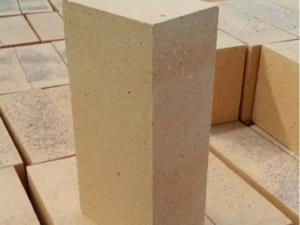Description
High Alumina Cement: A Specialized Cement with Unique Properties
High alumina cement (HAC), also known as calcium aluminate cement, stands apart from ordinary Portland cement due to its distinct chemical composition and the unique properties it imparts to concrete. While Portland cement relies primarily on calcium silicates, HAC is predominantly composed of calcium aluminates, leading to a faster setting time, higher early strength, and enhanced resistance to specific environmental conditions.
Composition and Manufacturing:
HAC is manufactured by fusing or sintering a mixture of bauxite (a primary source of alumina) and limestone. The resulting clinker is then ground into a fine powder, similar to the process for producing Portland cement. The key ingredient, calcium aluminate (CaAl₂O₄), gives the cement its characteristic properties. The specific proportions of bauxite and limestone, along with additives, can be adjusted to tailor the cement’s properties for specific applications.
Key Properties and Advantages:
HAC offers a range of advantages that make it suitable for specialized applications:
- Rapid Hardening: HAC exhibits significantly faster setting and hardening compared to Portland cement. This rapid strength gain is crucial in situations requiring quick turnaround times, such as emergency repairs or precast concrete production.
- High Early Strength: Concrete made with HAC develops considerable strength within 24 hours, often exceeding the strength achieved by Portland cement concrete after several days. This makes it ideal for projects where rapid load-bearing capacity is essential.
- Resistance to Chemical Attack: HAC demonstrates excellent resistance to sulfates, weak acids, and seawater. This makes it a preferred choice for applications in corrosive environments, such as sewage treatment plants, marine structures, and industrial facilities.
- High Temperature Resistance: HAC retains its strength at elevated temperatures, making it suitable for use in refractory applications like furnace linings and chimney stacks.
- Freeze-Thaw Resistance: While not universally superior, specifically formulated HAC mixes can exhibit good resistance to freeze-thaw cycles, particularly when combined with appropriate air-entraining agents.
- Self-Desiccation: During hydration, HAC consumes more water than Portland cement. This process, known as self-desiccation, can reduce the risk of early-age shrinkage cracking.
Applications:
The unique properties of HAC make it valuable in diverse applications, including:
- Emergency Repairs: The rapid setting and high early strength are invaluable for quick patching and repairs to roads, bridges, and other critical infrastructure.
- Sewerage Systems: Its resistance to sulfates and other chemicals makes it ideal for constructing sewerage pipes, manholes, and other components exposed to corrosive wastewater.
- Refractory Concrete: Its ability to withstand high temperatures makes it suitable for lining furnaces, kilns, and incinerators.
- Precast Concrete: The rapid hardening properties accelerate the production cycle of precast concrete elements, increasing efficiency and reducing costs.
- Marine Structures: HAC’s resistance to seawater makes it a viable option for constructing docks, piers, and other coastal infrastructure.
- Mining Applications: Its resistance to acidic mine drainage makes it suitable for constructing structures in mining environments.
Considerations and Cautions:
Despite its advantages, there are important considerations when using HAC:
- Conversion: Under certain conditions (high humidity and temperature), HAC concrete can undergo a process known as “conversion,” where the initial high-strength hydrates transform into a more porous and weaker crystalline structure. This can lead to a reduction in long-term strength and durability. Proper mix design, curing practices, and temperature control can mitigate the risk of conversion.
- Cost: HAC is generally more expensive than Portland cement, limiting its use to applications where its specific properties justify the higher cost.
- Expertise: Successful use of HAC requires specialized knowledge of its behavior and handling requirements. Proper mix design, curing, and construction practices are essential to ensure long-term performance.
Conclusion:
High alumina cement is a specialized cement offering unique properties that make it indispensable in specific applications where rapid hardening, high early strength, and resistance to harsh environments are critical. While considerations such as cost and potential for conversion need to be carefully addressed, the advantages of HAC provide valuable solutions for various construction and industrial needs. Its continued development and careful application ensure its role as a vital component in the construction industry.











Reviews
There are no reviews yet.